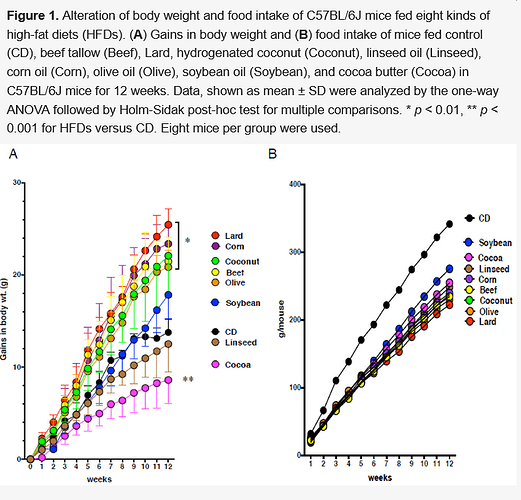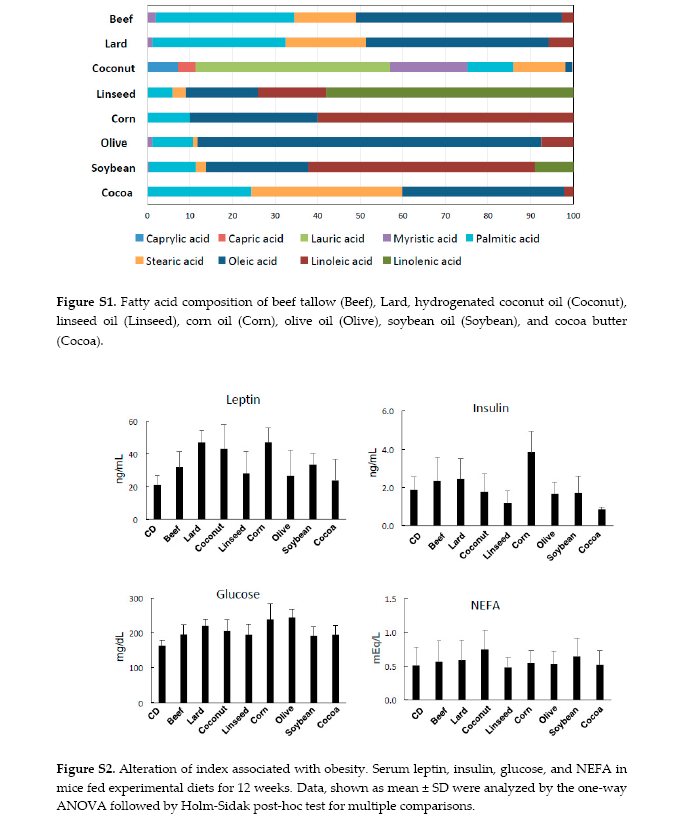All the other cocoa butter threads are a/ old and b/ not in the science section, so I’m starting a new one here.
This is a white paper that was studying mice, different kinds of fat, and the effects of that on (a) body weight, (b) gut biome diversity/quantity, and © a variety of intestinal issues including metaplasia.
Oils: Control, Beef, Lard, Coconut, Linseed, Corn, Olive, Soybean, Cocoa[butter]
I found the bits about cocoa butter to be very interesting. It was by far, of the list, the best results in every area. To the degree I was looking at the funding etc. to see if it was related hahaha. Doesn’t seem like it.
Brief excerpts:
We compared eight kinds of HFDs adjusted to 60% kcal from fat. In spite of the fact that food intake was similar among all HFDs, body weight gains were different. Increased body mass can be caused by the digestibility and absorption of fat. Cocoa butter has been known to be a low-energy fat. In general, lipid digestibility is less than 95%. In contrast, cocoa butter digestibility is 60–70%, as the binding of calcium to form poorly digested fatty acid-calcium complexes results in low absorption…
and
Cocoa butter is composed of similar fatty acids as lard and beef tallow, however, the mice fed Cocoa diet kept lean with a healthy gastric mucosa. Moreover, dietary cocoa ameliorates the inflammatory mediators, IL-6 and MCP-1, in diet-induced obese mice [19] and inhibits colorectal cancer induced by AOM/DSS…
and
In addition, it has been reported the Cocoa diet suppressed permeability of intestine by sustained occludin and ZO-1, tight junction molecules used for the maintenance of intestinal epithelial barrier [45]. Through these mechanisms, it can support mucosal integrity and suppress dysregulation of stemness.
and
All HFDs tended to increase microbial number and higher occupancy of Lactobacillus in the stomach. These effects were most pronounced in the Olive and Cocoa groups, in which these diets failed onset of intestinal metaplasia. Furthermore, in Cocoa-fed mice, the microbial community in both the stomach and large intestine tended to increase in diversity more than the other diet groups.




